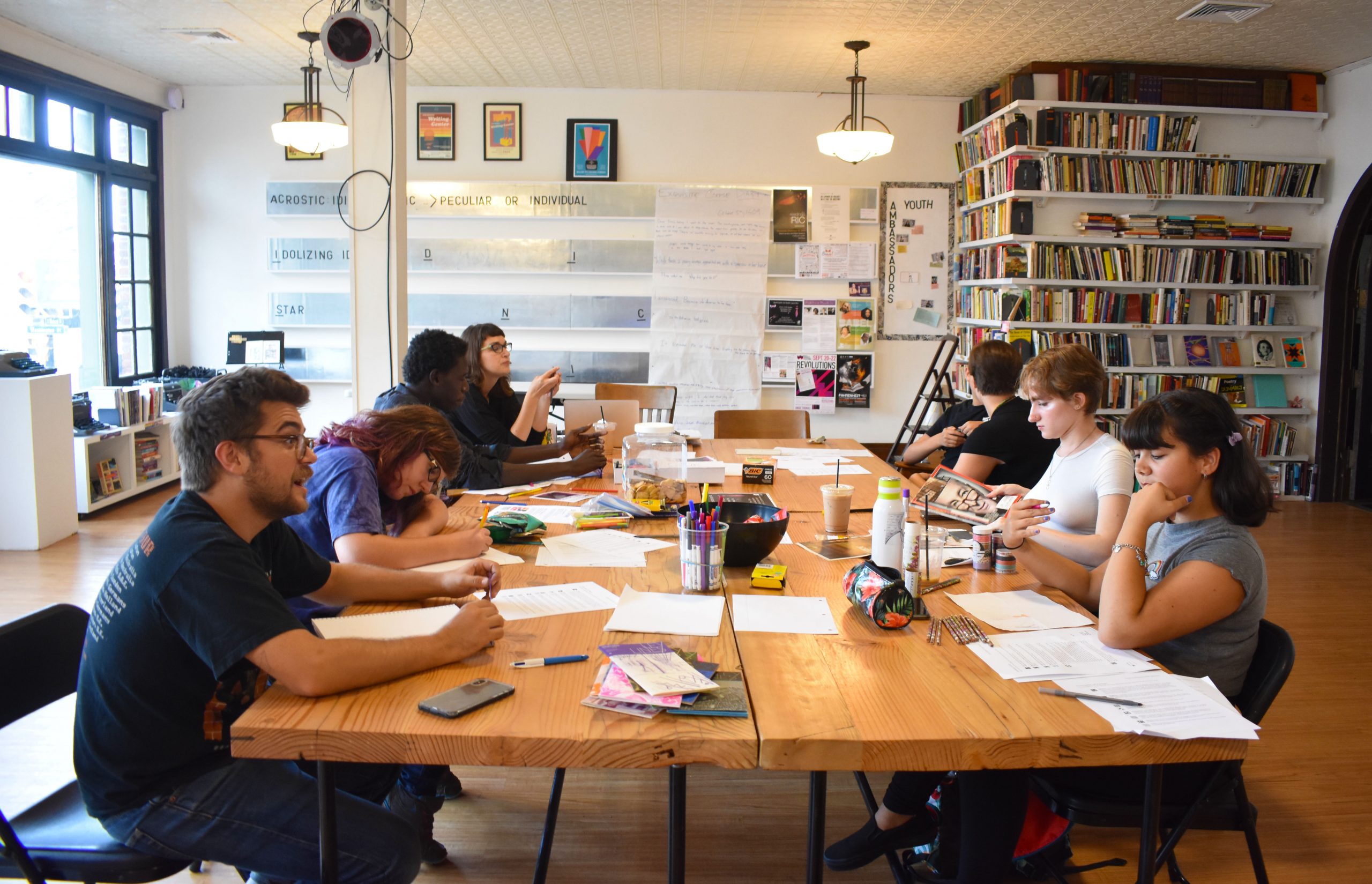
Thursday, September 20, 2018 “Art Comix” @JBWC
An alien abduction, an anthropomorphic squirrel, and a collection of disjointed body parts all walk into a workshop – or rather, come out of it. These were the images that the “Art Comix” workshop conjured on the evening of September 13th in the Just Buffalo Writing Center. The workshop’s students had the option to draw inspiration from a number of selected poems, or create a new one through the lens of what settling for the first time in Buffalo, as someone totally new to the city, would feel like. Some of the poems that sprang from this prompt will be showcased on September 22 at Points of Departure, where refugees and immigrants will be welcome to share their experiences as new members of the community and the fabric of America.
Max Weiss, who headed the workshop with help from Writing Center Coordinator, Robin Jordan, offered this caveat:
“Take risks, even if they don’t make sense,” Weiss said.
For Weiss, the workshop was meant to help students navigate the marrying of visual art and narrative as a form of storytelling, which he believes to be a more intimate form of expression than even his previous craft of songwriting, which took him down to Nashville for a stint as a guitarist after college.
“With music you may need an audience whereas in comics, you could collaborate, or you could do everything on your own,” Weiss said. “I’ve been able to have a lot of fun with myself creating independently, and so I left Tennessee and as soon as I got back I found this place.”
As Weiss made his rounds of the table where students worked, he carefully eavesdropped on the creative process of his students. Many of them drew directly from the poems they’d written two days prior in response to that same mystifying prompt; how does it feel to be a stranger in your own waking world? Perhaps a sense not too far removed from the lived experiences of most budding young adults, but distant enough to be an alien concept for many native-born American kids. From there, cue an hour of clacking on typewriters, Keith Haring-esque figures sprouting on the page, an analysis of Exodus 34:14, and debates on the best animal characters to ever hit a screen.
One student, Cora, meticulously carved an array of circles and narrow ovals, gradually building them into full bodies with arms and faces. In the first fully fleshed-out strip, an anthropomorphic squirrel spills an “Ugh” into a speech bubble. In the strips that follow, the squirrel is approached by her friend, a cat, who is from the neighborhood. The comic was labeled with the temporary title “title.” The naming of her work is usually done gardening style, so to speak. This means she typically starts with a idea that comes to fruition as she tends to her craft, growing into a fully-formed piece with a fitting title. This is a gradual, careful process; she pays especially close attention to the slope of her lines by using her ruler and gently pressing her pencil to the paper, so if any erasing needed to be done, it would be invisible.
“This character, the squirrel, she recently moved into the town. So, this the cat, and the other character that I’ve not created yet are her only friends.”
In her own words, it’s always been harder to draw people, and so deciding on animals as characters was both easier and unique to her. The final title and strips of the comic were not yet solidified by the end of workshop, but Weiss encouraged her to think of other famous animals in film and TV to help round out the comic.
While some students imagined comics of talking animals, or aliens, or colorful human figures, other interpretations of comics included a collage of mingled body parts. Sage, a JBWC regular, found that her graphic style works best when she can manipulate existing images and repurpose their parts for her own distorted collages, like a collection of color-popping lips with no faces behind them, faces with missing eyes, or even faceless heads, all of which create an emotionally unsettling sense of ambiguity. Her poem was written on a typewriter and arranged in a scattered display on each page:
And this is the place
I know I could love you
Or anyone
Or everyone
And we sit
Sitting in the resultant buzz
Of stomach acid
Swimming in a dew drop
That swallows us whole
Like a shot of Malibu
Waiting to be brought back up
-Sage
Written by: Laritza Salazar




